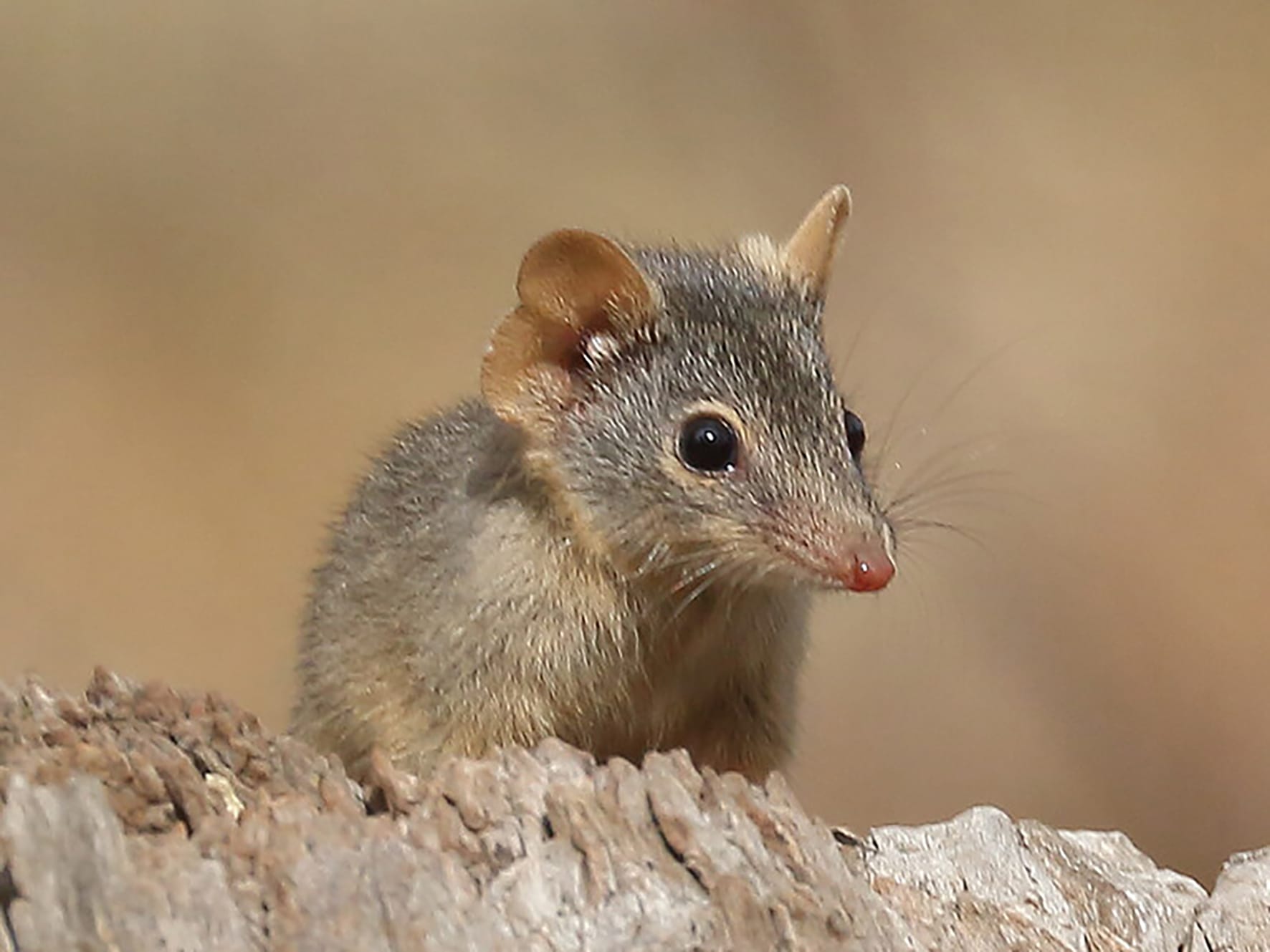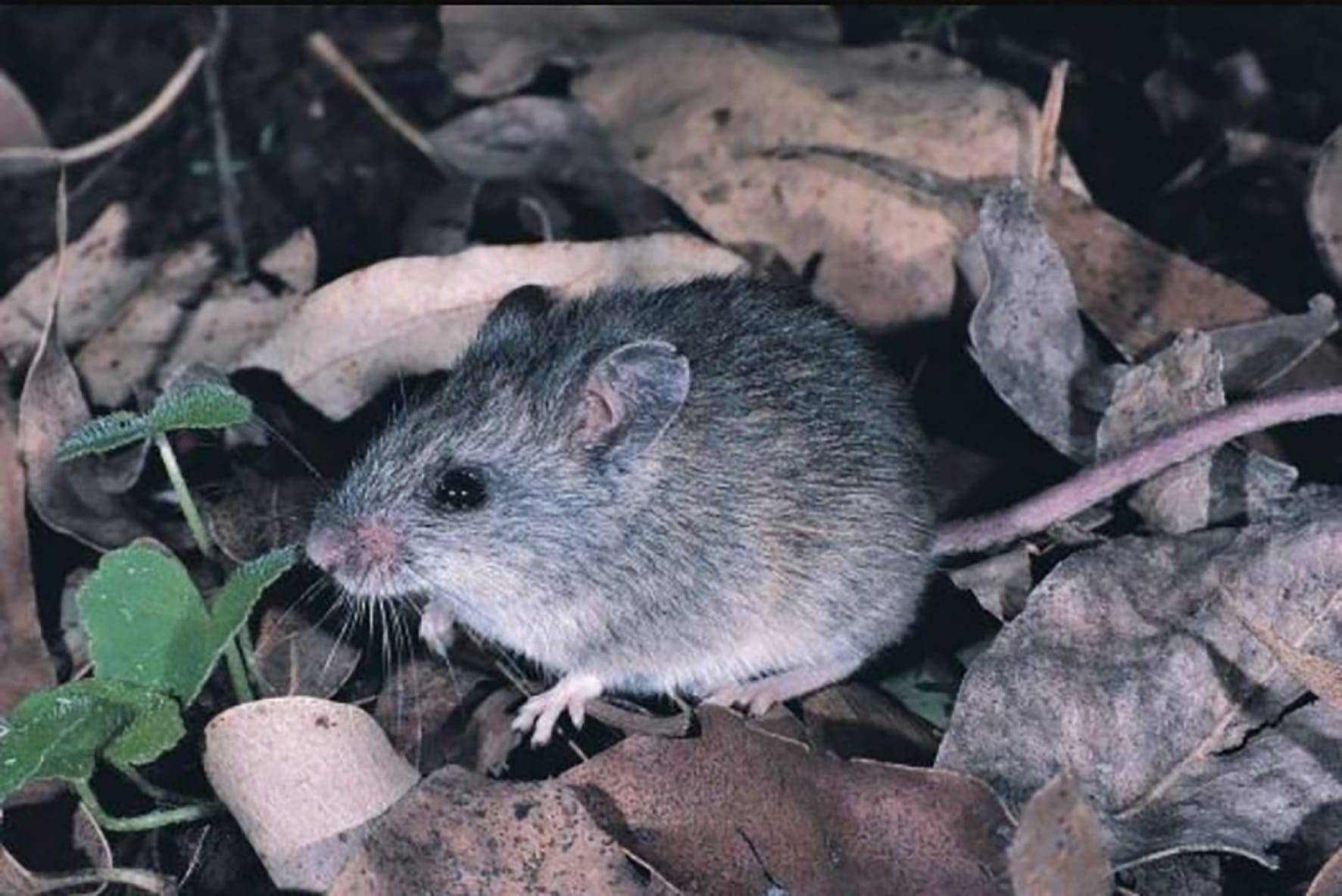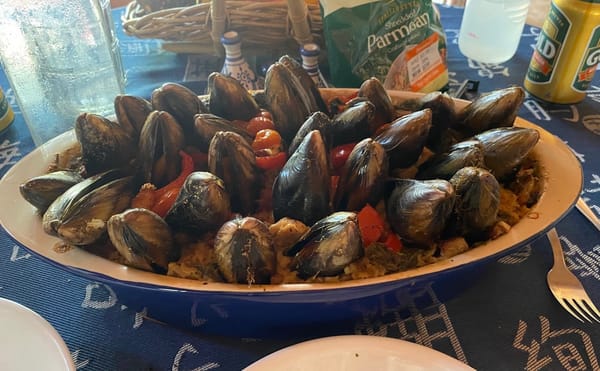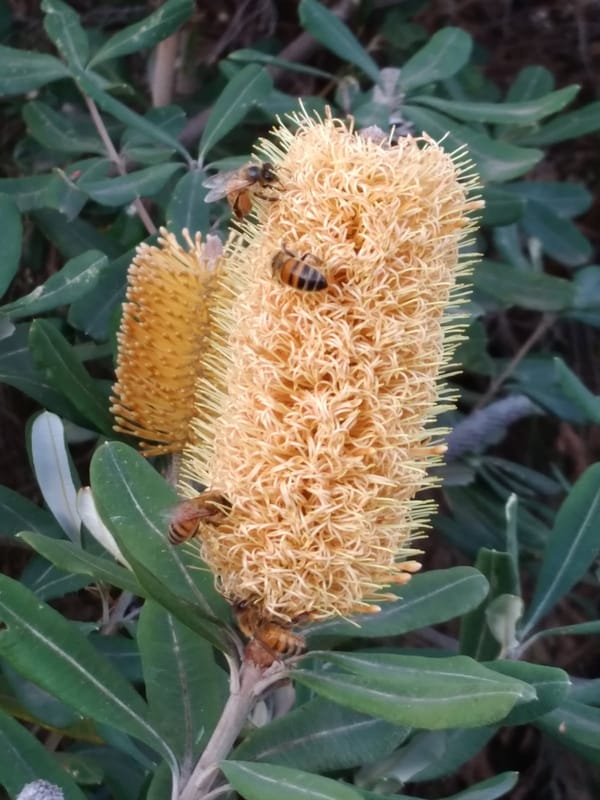Of mice and men

Many years ago, I was visiting a friend who lived in the Environmental Living Zone near Kangaroo Ground. I went into the kitchen and disturbed a large mouse on the counter which promptly scurried off. I called out to my friend that she had a mouse in her kitchen. She called out that I should not worry; it was not a mouse, it was an antechinus. In a place where introduced species of any sort are banned, the antechinus was a welcomed wild ‘pet’.
There are several antechinus species in Victoria. My friend’s little friend was possibly a yellow-footed antechinus (Antecinus flavipes). They are frequently mistaken for mice or rats, even though they are marsupials, not rodents. They are generally larger than a mouse, have ‘spikier’ fur, larger ears and a pointed snout. Their tail is proportionally shorter and is covered with sparse hair, unlike the scaley tail of a mouse. They lack the large rodent incisor teeth of the mouse. They are very clean and do not smell like mice do. They are carnivorous, eating insects, small reptiles and even small mammals such as mice.

Perhaps what really sets the antechinus apart is its mating behaviour. Their breeding season, usually in winter is very short and intense. Both the males and females will mate with multiple partners with mating sessions lasting up to fourteen hours. This intense mating behaviour leads to a surge in stress hormones in the males, causing a collapse of their immune systems and a general physical deterioration. The males all die soon after the end of the mating season.
Even though the death rate of males is 100% each year the antechinus is not endangered, although cats and habitat loss have caused a decline in numbers.

Even more years ago I was bushwalking with friends. I don’t remember exactly where but it was a sub-alpine walk. On going to bed, one of the young women in the party discovered that a ‘mouse’ had somehow got into her hike tent and was trying to get into her food bag. It caused us great amusement watching her trying to eject her very quick and agile visitor. It may have been an antechinus but it was more likely a pookila, also called the New Holland mouse (Pseudomys novaehollandiae).
The pookila actually is a rodent, and as such typically eats seeds, leaves, fungi, and insects. It differs from the house mouse in that it has larger eyes, rounded ears, its fur is more a sandy-brown, the tail is bicoloured (pink and brown) and it lacks the mousey smell of the house mouse. All these distinguishing features are difficult to see in an animal panicking in a tent, but if it is miles from anywhere, deep in the ranges, then it is unlikely to be a house mouse. The pookila can also be found in houses and agricultural areas.
The pookila was first described in1843 and eventually vanished for over a century before being rediscovered in Kur-in-gai Chase NP in 1967. It has now been found in much of south-eastern Australia. The pookila is listed as vulnerable with habitat loss and predation by feral cats and foxes causing a significant decline in the population. Exotic species of fungi, toxic to the mice, also play a role in its decline. It is not known how many pookila are trapped or poisoned through rodent control measures. Like many of our native species, the pookila now finds it is competing with introduced species for resources. Zoos Victoria, in conjunction with Moonlit Sanctuary is instigating a captive breeding program to reintroduce the pookila into the wild.
So, if you are well away from ‘civilisation’ and come across a mouse don’t try to kill it. It is probably a small native species that you have intruded upon. It would be illegal to kill it anyway. Just feel privileged that you have seen one of our smaller and more elusive species.




